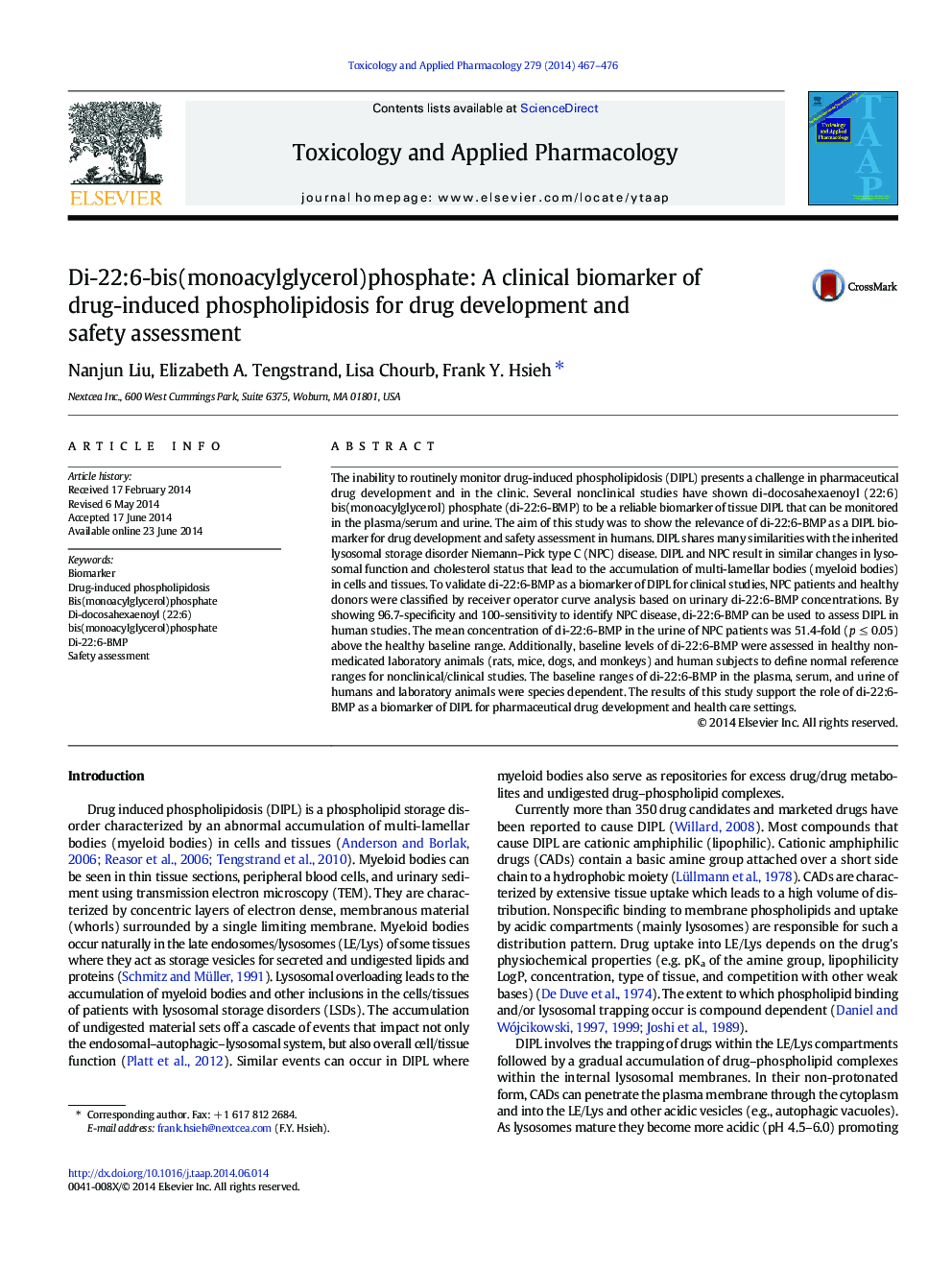| کد مقاله | کد نشریه | سال انتشار | مقاله انگلیسی | نسخه تمام متن |
|---|---|---|---|---|
| 2568565 | 1128465 | 2014 | 10 صفحه PDF | دانلود رایگان |

• A reliable biomarker of drug-induced phospholipidosis (DIPL) is needed for humans.
• Di-22:6-BMP is specific/sensitive for DIPL in animals as published in literatures.
• The di-22:6-BMP biomarker can be validated for humans via NPC patients.
• DIPL shares morphologic/mechanistic similarities with Niemann–Pick type C disease.
• Di-22:6-BMP is an effective DIPL biomarker in humans via NPC patient validation.
The inability to routinely monitor drug-induced phospholipidosis (DIPL) presents a challenge in pharmaceutical drug development and in the clinic. Several nonclinical studies have shown di-docosahexaenoyl (22:6) bis(monoacylglycerol) phosphate (di-22:6-BMP) to be a reliable biomarker of tissue DIPL that can be monitored in the plasma/serum and urine. The aim of this study was to show the relevance of di-22:6-BMP as a DIPL biomarker for drug development and safety assessment in humans. DIPL shares many similarities with the inherited lysosomal storage disorder Niemann–Pick type C (NPC) disease. DIPL and NPC result in similar changes in lysosomal function and cholesterol status that lead to the accumulation of multi-lamellar bodies (myeloid bodies) in cells and tissues. To validate di-22:6-BMP as a biomarker of DIPL for clinical studies, NPC patients and healthy donors were classified by receiver operator curve analysis based on urinary di-22:6-BMP concentrations. By showing 96.7-specificity and 100-sensitivity to identify NPC disease, di-22:6-BMP can be used to assess DIPL in human studies. The mean concentration of di-22:6-BMP in the urine of NPC patients was 51.4-fold (p ≤ 0.05) above the healthy baseline range. Additionally, baseline levels of di-22:6-BMP were assessed in healthy non-medicated laboratory animals (rats, mice, dogs, and monkeys) and human subjects to define normal reference ranges for nonclinical/clinical studies. The baseline ranges of di-22:6-BMP in the plasma, serum, and urine of humans and laboratory animals were species dependent. The results of this study support the role of di-22:6-BMP as a biomarker of DIPL for pharmaceutical drug development and health care settings.
Journal: Toxicology and Applied Pharmacology - Volume 279, Issue 3, 15 September 2014, Pages 467–476